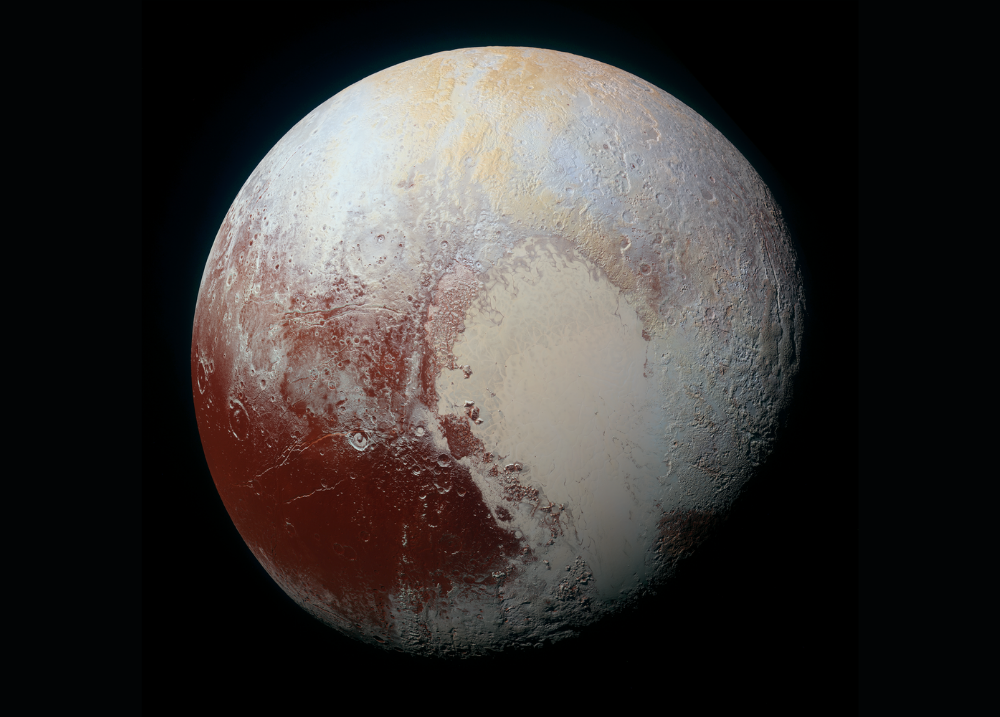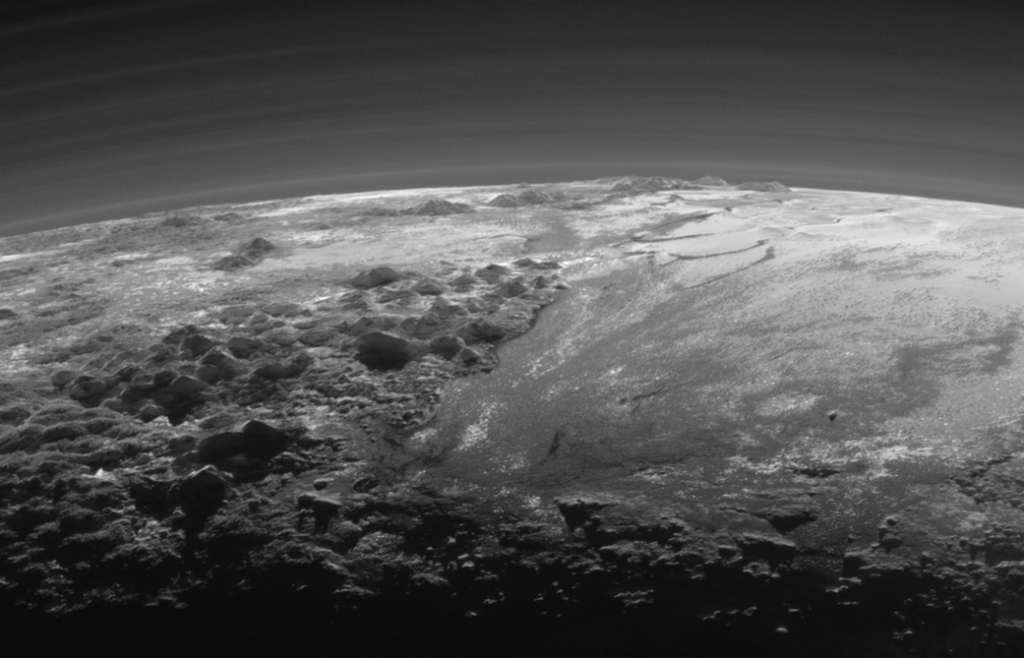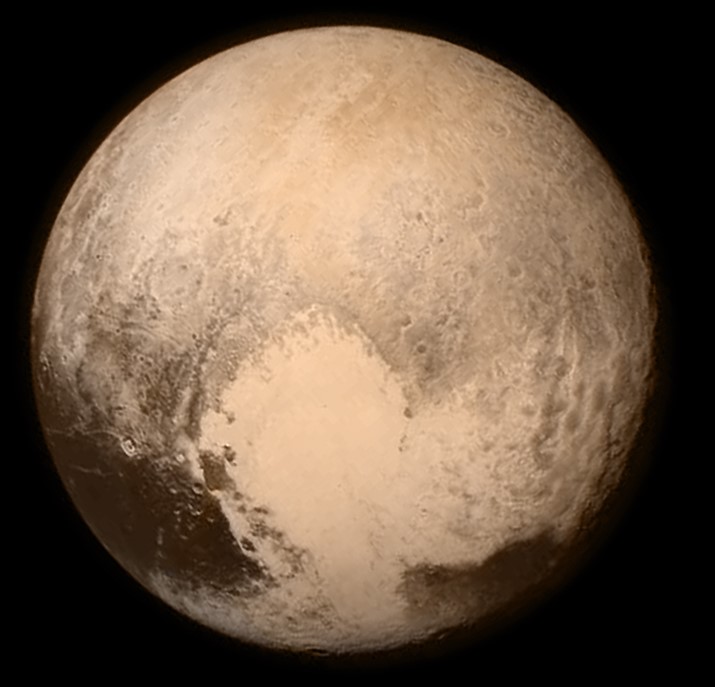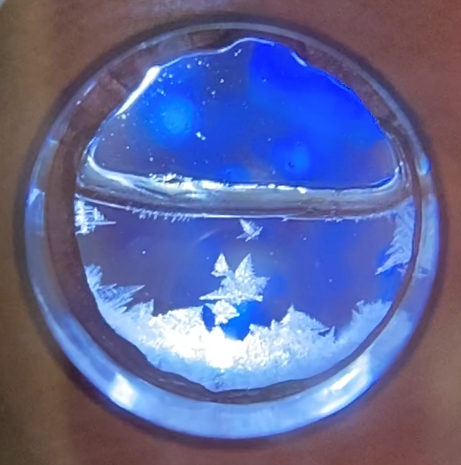Shae Raposa is a Ph.D. student in the Department of Astronomy & Planetary Science; she studies volatile materials on Pluto and other outer solar system bodies. In honor of Pluto’s birthday, The NAU Review asked her to share her favorite facts about this mysterious celestial body and discuss her research.
Pluto was discovered on Feb. 18, 1930. Since that day, we have learned an extraordinary amount about the dwarf planet. In honor of the 92nd anniversary of the discovery date, here’s 10 facts about Pluto:
- Pluto was discovered right here in Flagstaff! This discovery was made by Clyde Tombaugh at Lowell Observatory down the street from NAU.
- Pluto takes 248 Earth years to orbit around the Sun. Beyond the orbits of the eight planets of our solar system exists a region of likely millions of icy bodies called the Kuiper belt. This is where Pluto lives. This region is so far out that, while it takes the Earth one year to orbit the Sun, it takes Pluto 248 times longer.
- Pluto’s surface temperature is -375 to -400 degrees Fahrenheit! Because the Kuiper belt is so far from the Sun, Pluto’s average surface temperature ranges from -375 to -400 degrees Fahrenheit! This is so cold that water is as hard as rock, and things we know to be gaseous on Earth (nitrogen, methane, carbon monoxide) exist as ices and liquids on the surface.
- Pluto has a thin atmosphere. Although the atmosphere is much, much thinner than our atmosphere, Pluto does have a thin atmosphere consisting mostly of nitrogen and some smaller amounts of methane and carbon monoxide.
- We got a close-up view of Pluto from New Horizons. Since Pluto is so far away, we didn’t know much about it until recently and
assumed it was just another icy body. This was proven to be completely wrong in July 2015. After a 10-year, 3-billion-mile trip, the New Horizons spacecraft made it to Pluto, and was able to take incredible pictures of the surface during its fly-by, like the one to the right! This image was taken near sunset, and nicely captures Pluto’s atmospheric haze.
- Pluto hosts mountains. New Horizons discovered many cool features on Pluto, such as mountains that reach heights of 20,000 feet! These are impressive heights for the dwarf planet. Tenzing Montes is a region of Pluto that contains some of its tallest mountains, and is pictured in the bottom left of the the New Horizon image. Because water-ice is as hard as rock at these temperatures, it is likely that the mountains are composed of water-ice “bedrock.”
- Pluto has a “heart.” A famous region of Pluto is the heart-shaped region pictured below. The left part of the heart is a region called Sputnik Planitia, which contains flowing glaciers of nitrogen, methane and carbon
monoxide! The geologic activity caused by this region has even driven this side of the planet to face in the opposite direction of Pluto’s moon Charon through a process called true polar wander.
- Pluto likely has a subsurface water ocean. Data from New Horizons suggests that a heavy mass beneath the surface could have also played a role in Pluto’s orientation with its moon Charon. This data, coupled with observations of Pluto’s tectonic structures, suggest Pluto could be hosting an ocean beneath its surface.
- Pluto has dunes. Scientists suspect these dunes to be made of sand-sized grain particles of methane ice. Pluto doesn’t have particularly fast wind speeds, so it is possible it had a windier past, and potentially a thicker atmosphere, that helped shape these dunes.
- Pluto has five moons! Along with Pluto’s largest moon Charon, there are four other moons that orbit it. These are: Styx, Nix, Kerberos and Hydra. Charon is close in size to Pluto, so the two are sometimes referred to as a double dwarf planet system.
About Shae’s research
Although we have learned an impressive amount about Pluto from New Horizons, the exciting findings lead to more questions about what is happening on and beneath the surface. Raposa’s research looks to answer some of the questions that remain. She works in the Astrophysical Materials Laboratory, AKA the ice lab, at NAU. The ice lab is the perfect place to study Pluto because we can conduct experiments with Pluto’s abundant substances (like nitrogen, methane and carbon monoxide) at these very cold (-375 to -400 degrees Fahrenheit) temperatures. To the right is an example of what a sample would look like during an experiment. In this case, this picture shows an ice/liquid mixture of carbon monoxide and methane.
Shae hopes to gain a better understanding of how these substances behave at these temperatures, so she can apply that knowledge to places like the vast glacial region of Sputnik Planitia. A useful way to represent these behaviors is through phase diagrams. Phase diagrams tell us information about what phase (gas, liquid, ice or a combination of these phases) a mixture is in for a given temperature, pressure and composition. While creating these phase diagrams, she also pays attention to general behaviors, like if the ice is sinking or floating in the liquid, which could be useful when determining what may be happening at Pluto’s glaciers.
Top image: NASA’s New Horizons spacecraft captured this high-resolution enhanced color view of Pluto on July 14, 2015.




 assumed it was just another icy body. This was proven to be completely wrong in July 2015. After a 10-year, 3-billion-mile trip, the New Horizons spacecraft made it to Pluto, and was able to take incredible pictures of the surface during its fly-by, like the one to the right! This image was taken near sunset, and nicely captures Pluto’s atmospheric haze.
assumed it was just another icy body. This was proven to be completely wrong in July 2015. After a 10-year, 3-billion-mile trip, the New Horizons spacecraft made it to Pluto, and was able to take incredible pictures of the surface during its fly-by, like the one to the right! This image was taken near sunset, and nicely captures Pluto’s atmospheric haze. monoxide! The geologic activity caused by this region has even driven this side of the planet to face in the opposite direction of Pluto’s moon Charon through a process called true polar wander.
monoxide! The geologic activity caused by this region has even driven this side of the planet to face in the opposite direction of Pluto’s moon Charon through a process called true polar wander.